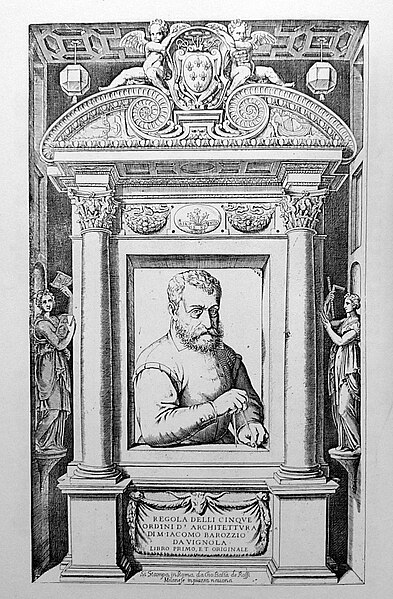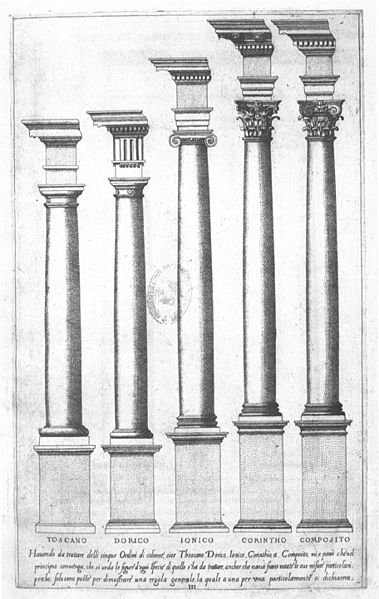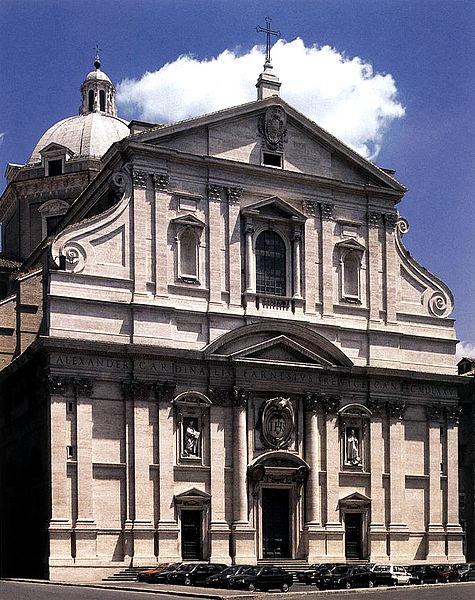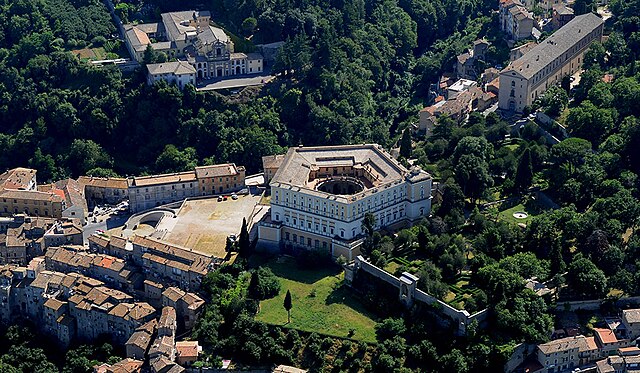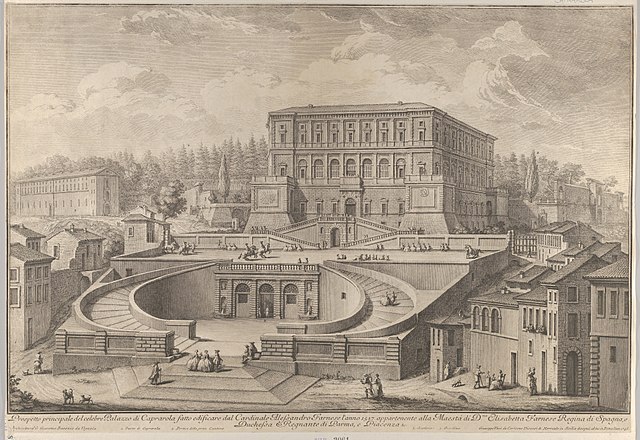Giacomo Barozzi da Vignola
Giacomo Barozzi da Vignola, often simply called Vignola, was one of the great Italian architects of 16th century Mannerism. His two great masterpieces are the Villa Farnese at Caprarola and the Jesuits' Church of the Gesù in Rome. The three architects who spread the Italian Renaissance style throughout Western Europe are Vignola, Serlio and Palladio. He is often considered the most important architect in Rome in the Mannerist era.
Giacomo Barozzi da Vignola
The five orders, engraving from Vignola's Regola delli cinque ordini d'architettura
Church of the Gesù, Rome, also named Church of the Most Holy Name of Jesus at the "Argentina"
Cloister of the Pontifical University of Saint Thomas Aquinas, Angelicum is traditionally attributed to Vignola but completed after his death. Ten arches on the long sides and seven on the short are sustained by pilasters with Tuscan-style ornamentation that rise from high plinths. A simple frieze with smooth triglyphs and metopes separates the lower from the upper levels.
The Villa Farnese, also known as Villa Caprarola, is a pentagonal mansion in the town of Caprarola in the province of Viterbo, Northern Lazio, Italy, approximately 50 kilometres (31 mi) north-west of Rome, originally commissioned and owned by the House of Farnese. A property of the Republic of Italy, Villa Farnese is run by the Polo Museale del Lazio. This villa is not to be confused with two similarly-named properties of the family, the Palazzo Farnese and the Villa Farnesina, both in Rome.
Side view of the main Southeastern front of Villa Farnese
Aerial view of the Villa
Prospetto principale di Palazzo di Caprarola by Giuseppe Vasi, c. 1746–1748
The Scala Regia in the Villa Farnese

